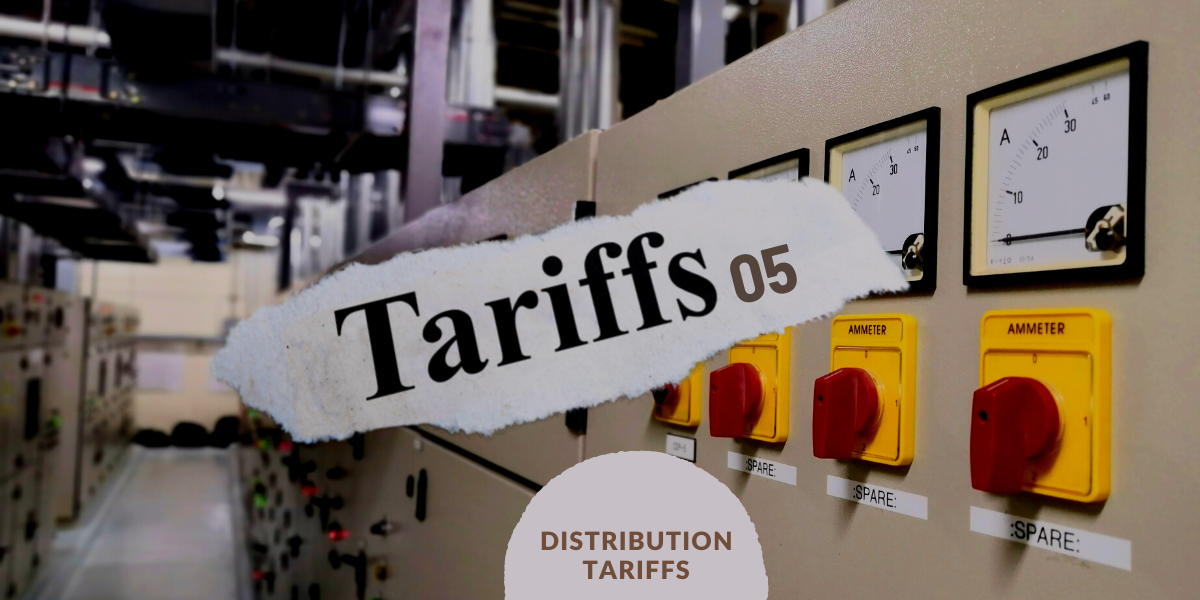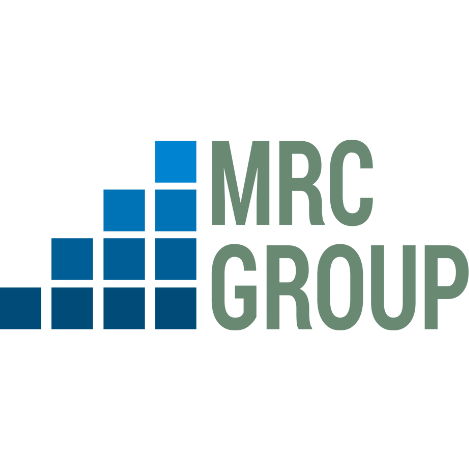
1. INTRODUCTION
Distribution is a Key stakeholder in the Nigerian Electricity Supply Industry (NESI) value chain. In many deregulated electricity markets, this stakeholder is primarily responsible for managing the flow of power through the distribution system. However, in Nigeria, Distribution Companies (DisCos) in addition provide direct customer services such as metering, billing and collection of payments for energy consumed, and overall revenue collection for NESI. For the provision of these services, the DisCos in the NESI are entitled to a charge known as the distribution use of system charge (DuoS). In part 1 of our tariff series, we provided highlights about the DuoS tariff, and the percentage of the end-user tariff it constitutes. However, in this article, we will be taking a deep dive
2. Distribution Pricing
A good distribution sector pricing model should allow the licensees to recover their full cost of capital, and operational & maintenance costs and earn a reasonable return. All of these enable necessary investments to be made to improve service delivery. Distribution networks are similar to transmission networks in that they deliver electricity. However, distribution networks deliver electricity at a lower voltage than transmission networks and across shorter distances. This means that the transmission network transports electricity from power plants to the distribution network interface point and from there, the distribution network ensures that the electricity received gets delivered to the end-user, be it homes, offices, industries etc. However, just like transmission companies, distribution companies must invest and maintain their network infrastructure to efficiently provide these services, and the distribution tariff is designed to allow them to do that.
2.1. Distribution Tariffs
Typically, distribution tariffs are made up of two costs: a fixed charge and an electricity kWh-based charge. The fixed charge allows for the recovery of the DisCos fixed costs such as distribution infrastructure. Whilst the kWh-based charge varies as it depends on customers’ electricity consumption. This means that when supply and consumption are low, DisCos are unable to fully recover all the required network costs, this is because tariffs are typically set based on an energy supply level. However, the fixed charge can hedge against low recovery on network charges as it is charged even when there is no supply or consumption. For example, a household that summers outside its primary residence may leave its house unoccupied for three months in a year. During that period, there is no electricity consumption from the household. However, they will still be charged a fixed fee for having access to the network
“It is important to note that some countries such as Nigeria do not have a fixed charge for distribution. The fixed charge component in the NESI was scrapped in 2016. ”
2.2. Distribution Pricing Model
The cost of distributing power can be determined in several ways. However, there are three main distribution pricing methodologies which may operate in tandem:
- Rate of Return Regulation –Here, the regulator determines the distribution tariff by accounting for the company’s efficient costs such as capital, operating and maintenance expenses, and depreciation to ensure the recovery of all these costs. The primary goal of the regulator under this price model is to ensure that operations are efficient. However, rate of return regulation also ensures that the regulator never sets indiscriminately low prices that are wholly unfavourable to the company whose primary focus is to make a profit. In assessing the rate of return, the regulator also evaluates the effects of price changes on profit to ensure that investors get a fair rate of return on their investments. When implemented properly, rate of return regulation ensures a steady flow of capital for investment because it specifically looks out for the interests of investors. Therefore, rate of return regulation is a pricing system where tariffs are set by merging a company’s costs and an allowed rate of return to create a revenue requirement. This model is currently applied to Distribution operators in Portugal.
- Price-Cap Regulation –In this system, the regulator sets a cap on the maximum amount that can be charged by the company. These price caps are often fixed for several months, or years called “regulatory periods”. At the end of each regulatory period, the regulator reviews the price ceiling to account for any changes in the tariff components. This model is applied in the Netherlands
- Operational Charges –Under this model, companies are regulated via financial incentives geared towards encouraging certain behaviours such as cost reduction and improvements in the quality of services provided by the regulated companies. While all regulations may inherently provide incentives, performance-based regulations are focused particularly on the outcome above all else as this is the main factor that drives the structure of this pricing model. This is why in setting prices under this model, regulators are advised to focus on the desired outcomes at all times. This model is in effect in Nigeria where the regulator has applied a performance-based model called the “building blocks methodology”. This methodology was discussed extensively in parts 1 and 2 of our tariff series.
2.3. Differences in Distribution Tariffs across Jurisdictions
The three models above are the most popular pricing models in the electricity sector. However, distribution tariffs also differ across jurisdictions depending on the following:
- The split of different DisCo Activities – In some electricity markets, the distribution tariff is split into the different DisCo functions. As such, there may be separate tariffs for the network, metering, and commercial functions of the DisCo. This methodology is in effect in Austria.
- The tariff structure – Some distribution tariffs contain a combination of a fixed charge and a power or energy charge. In the United Kingdom, for example, there is a fixed charge as well as a variable rate for each kWh of energy and in Nigeria, there is no fixed charge in the distribution tariff.
- The split of distribution costs on the different customer groups – There could be separate charges for different customer groups. In the Netherlands, 51% of the total distribution cost is paid by households, 18% by small businesses and 31% by large businesses. This is also similar to what is practised in Nigeria under the Service Based Tariff (SBT) regime, where customers are charged based on their electricity reliability levels. The higher your hours of supply, the higher the tariff for the customer
- The time of use – The pricing model adopted could consider seasons or the time of day e.g., some countries such as Portugal have different charges for off-peak and peak times of the year and many European countries have time-of-use tariffs which fluctuate depending on changes in supply and demand.
- The location of the Users – In some countries, there is a uniform distribution tariff across the entire country. However, in countries like the Czech Republic and Nigeria, each DisCo charges a different tariff for their franchise area.
- The customer classification – In Nigeria, customers are typically classified into three groups: industrial, commercial, and household customers. However, this is not the only way to classify customers. In Romania, customers are classified according to voltage levels and may be categorised as High, Medium or Low Voltage customers.
“These differences highlighted above show how diverse the electricity Distribution business can be”
3. The Distribution Tariff in Nigeria
In a fully deregulated electricity market, there are usually electricity retailers who provide additional services in the value chain. These entities are responsible for making electricity sales, billing, and collection of revenue. However, the NESI is still in a transitional electricity market phase and DisCos are still responsible for distributing and selling electricity as well as billing and collecting revenue.
3.1. Distribution Costs in the NESI
There are two main costs covered by the distribution tariff in NESI:
- The Distribution Network Cost – This primarily covers the cost of the distribution network including network losses.
- The Retail Cost - This is made up of operational and administrative costs such as billing and collection of revenue.
3.2. Current Nigerian Distribution Tariff Components
Distribution tariffs in Nigeria differ among the 11 DisCos in operation. However, the following components tariff components can be found across all DisCo regions:
- Operating and maintenance Expenditure (OPEX)
- Return on Capital
- Depreciation of assets
- Central Bank of Nigeria’s Nigerian Electricity Market Stabilisation Facility (CBN-NEMSF) Loan repayment.
3.2.1. Operating and Maintenance Expenditure
This refers to the costs required to provide distribution services to customers in the NESI it includes but is not limited to costs like administration, billing, metering of customers, staff welfare and wages, and maintenance costs for distribution network infrastructure. The DisCos in Nigeria oversee distribution activities in regions specific to them across the country with varying consumer populations and network sizes. This means that operation and maintenance costs differ across the board. It is also a major reason for the variations in distribution tariffs across the country.
3.2.2. The Return on Capital
To set a return on capital, the Nigerian Electricity Regulatory Commission (NERC) calculates the capital expenditure (CAPEX) of each DisCo and adds the CAPEX to the current value of the DisCos assets. Then NERC calculates the annual depreciation of the asset and deducts that from the value obtained to arrive at an annual asset value. The weighted average cost of capital (WACC) is then applied to that value to get the amount for a reasonable return on capital. This return on capital is essentially the DisCos returns for making investments in the network and business activities. It encourages DisCos and external investors to invest in the distribution networks to improve service delivery in the NESI by guaranteeing a return on investment.
3.2.3. Depreciation of Assets
The depreciation component of the distribution tariff allows the DisCos and investors to recover the capital cost of a physical asset over its useful life. The easiest methodology for calculating depreciation is straight-line depreciation which is simply:
*The salvage value is an estimate of the monetary value of an asset at the end of its useful life. To illustrate, let’s assume a DisCo builds a new substation worth N100,000 with a lifespan of 30 years and estimates that the salvage value of the plant will be N3,000. Depreciation will be calculated as follows:
Using the formula above, we arrive at a depreciation value of N3,233 that should be recovered by the DisCo annually for the next 30 years. This cost of depreciation which is accounted for in the tariff differs across DisCos as they all have different physical assets with varying costs and lifespans.
3.2.4. CBN-NEMSF
Following the privatisation of the NESI in 2013, high losses and debt inherited post-privatisation resulted in liquidity challenges in the NESI. The CBN stepped in to assist stakeholders to manage these debts by providing a loan facility known as the CBN-NEMSF. The main objective of this initiative was to ensure the economic viability and sustainability of the market. This loan was disbursed to the DisCos, and to ensure the repayment of the loan, NERC embedded a loan repayment component in the Discos tariff.
3.3. Distribution Losses
In the tariff, NERC also accounts for electricity losses which are collectively called Aggregate Technical, Commercial and Collection Losses (ATC&C).
At boiling point, water evaporates. Similarly, when power moves through transmission infrastructure, some of it is lost naturally as heat energy. These losses which are called technical losses are an inevitable occurrence in every power system worldwide.
In contrast, commercial and collection losses are more common in developing countries. Commercial losses occur due to a misalignment between energy sold and billed, they often result from energy theft. Conversely, collection losses result from Disco’s inability to collect full payment from customers for the energy billed.
To control and account for these losses, a loss component is embedded in the distribution tariff. This component allows a reasonable percentage of energy losses in the tariff. The regulator reviews this allowed loss component downwards annually to encourage DisCos to apply innovative solutions geared towards reducing their overall losses.
DISCO's Average Tariff (N/kWh)
4. Conclusion
In the distribution sector, the tariff is designed to give DisCos efficient operating costs as well as a return on their investment which will encourage adequate development and ultimately improve service delivery. Yet, the incentive-driven distribution tariff methodology has not resulted in an improvement in the quality of service.
This may be attributed to high illiquidity issues and high losses in the distribution sector. Although the allowed loss components are already addressed in the distribution tariff, these losses are not an accurate representation of the reality in the Nigerian distribution space. Oftentimes, the actual losses incurred are much higher.
Furthermore, tariffs only recently became cost reflective. Before this, DisCos were unable to recover their reasonable costs and returns because the tariff did not account for them in totality.
Thus, with the new regime of cost-reflectivity coupled with strict bi-annual tariff reviews, we hope to see the effects of the incentive-based methodology materialise with an improvement in the quality of service delivered.
DisCos Average Tariff Breakdown (N/kWh) - 2023
“In the next article, we will look at tariff reviews and the various economic factors that can lead to a change in the NESI customer tariff”













This is an excellent write-up. Plainly explains the basics and succinctly too.